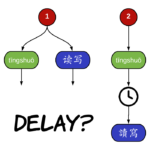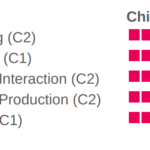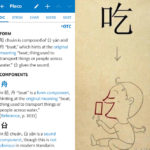Articles in the ‘Beginner’ category Page 18
-
Should you learn to speak Chinese before you learn Chinese characters?
The question of whether or not to delay learning Chinese characters in favour of the spoken language is an interesting one many arguments in favour of both approaches. For most people setting out on their Chinese learning journey, focusing on important aspects of the spoken language, such as pronunciation, is certainly more important than learning characters.
Read → -
How to get honest feedback to boost your Chinese speaking and writing
Feedback is important because it can show you how to not use the language and highlight things you hadn’t noticed before. But getting honest feedback when learning Chinese is not as easy as it seems. This article starts by looking at why feedback is necessary, and continues by discussing how to get honest feedback.
Read → -
Are mnemonics too slow for Chinese learners?
Mnemonics are very effective for certain types of learning, but how effective are they for learning Chinese? This article is the first of two that looks at the effectiveness of mnemonics, focusing on the question of speed. Are mnemonics too slow to be really useful in the context of using a foreign language?
Read → -
Learning Chinese words: When quantity beats quality
Any teacher, student or researcher will agree that vocabulary is important, but how should you go about it? What’s the goal? This article argues that a common problem for learners of Chinese is that they spend too much time learning too few words, and that they would be better of aiming for quantity over quality in many cases.
Read → -
When spaced repetition fails, and what to do about it
Spaced repetition software can boost your vocabulary learning significantly. The idea is to schedule each review as late as possible, but not so late that you forget the answer. This sounds good in principle, but when it comes to learning languages, just barely being able to come up with the right word is not enough!
Read → -
Chinese is fascinating and exciting, not weird and stupid
Languages are neither negative or positive in themselves; it’s all in the eye of the beholder. But does it matter what you think about Chinese language and culture? Is it harder to learn Mandarin if you think the language is weird and stupid? This article looks closer at this question, and argues that deliberately adopting a positive approach will lead to better and more enjoyable learning.
Read → -
How to figure out how good your Chinese is
Figuring out how good your Chinese is can help you focus on the right areas and evaluate your learning methods. But language assessment is hard! This article describes how and why you should assess how good your Chinese is, and gives you tools and resources to do so.
Read → -
The simple trick I used to double the amount of Chinese I listen to
Learning to understand spoken Chinese requires an awful lot of listening practice. In this article, I introduce and explain a simple trick that allowed me to listen twice as much as I used to!
Read → -
5 levels of understanding Chinese characters: Superficial forms to deep structure
How much do you need to care about the actual composition and meaning of a Chinese character when learning it? In general, better understanding means it’s easier to learn, but is there a limit to how closely you should stick to actual etymology? This article explores the spectrum from using superficial images to real etymology from the perspective of a language learner.
Read → -
The forking path: A human approach to learning Chinese
Top-down, project management style learning often fails for a number of reasons, but there are alternative, softer approaches to learning Chinese. In this article, I introduce one such approach that focuses on small, everyday choices rather than distant goals.
Read →









